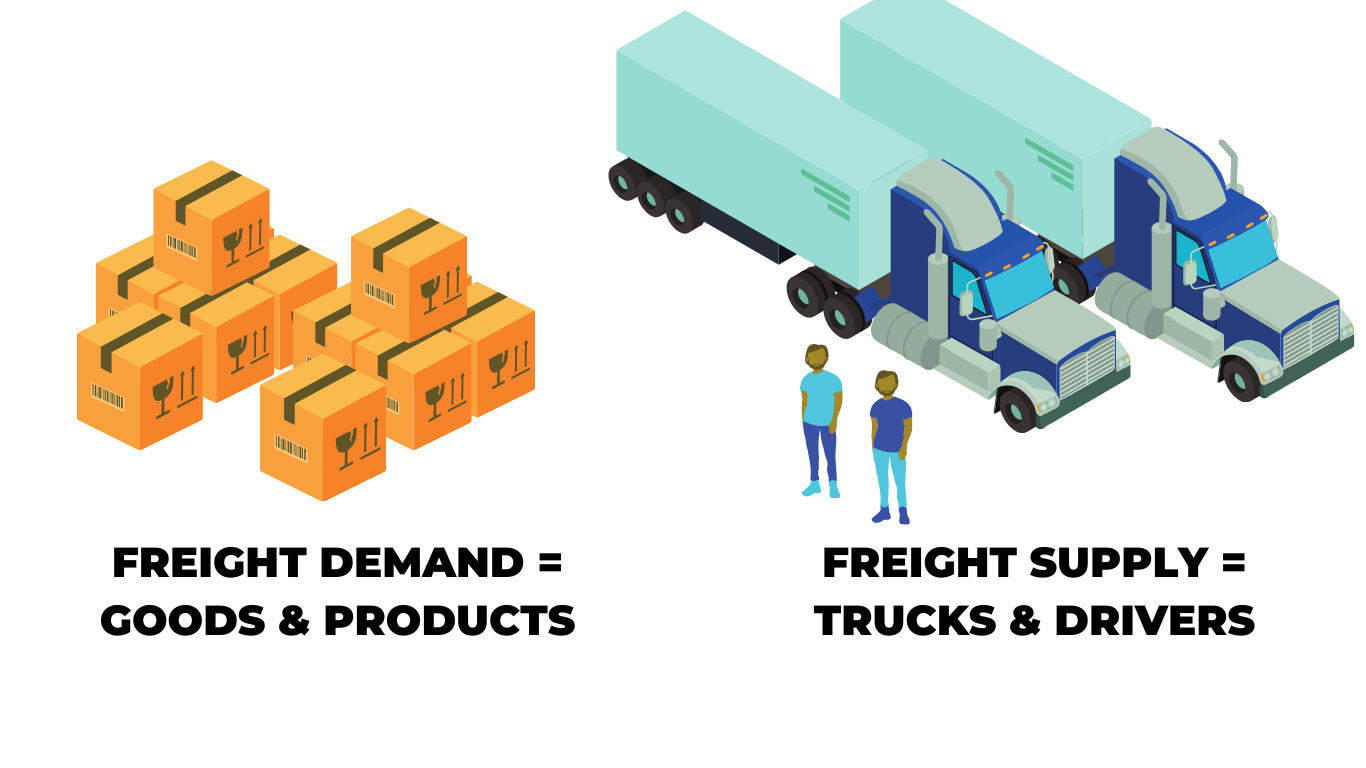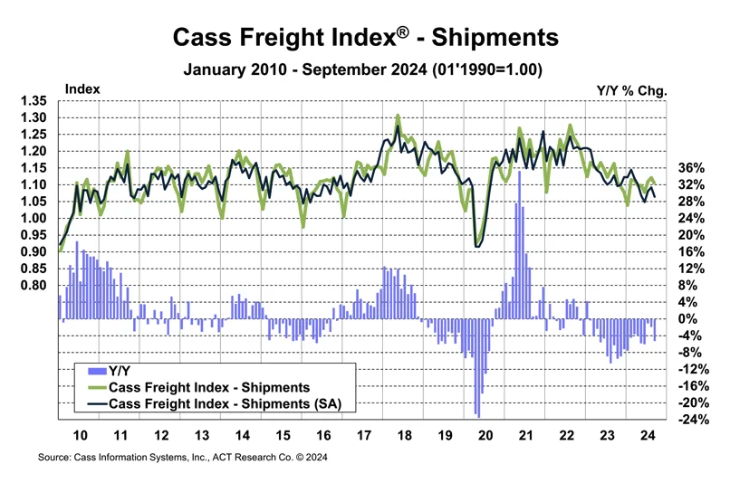The term freight refers to the movement of goods through the supply chain using various modes such as trucks, trains, ships, or planes. Freight rates represent the cost that shippers pay carriers for transporting their products, particularly in the truckload (TL) market.
These rates are influenced by a variety of factors, including economic demand, fleet availability, fuel costs, cargo weight, dimensions, distance, and the nature of the goods being transported. Rates can be negotiated either through long-term contracts or on a spot basis. During key periods like RFP season, shippers often rely on data from sources like ACT Research and DAT to make informed decisions and craft competitive bids.
Understanding current freight rates is essential for businesses to adapt to the constantly changing truckload market and plan effectively for the future.
What Factors Influence Freight Rates?
While the truckload cycle plays a major role in shaping freight rates, there are many other elements at play. According to ACT’s freight analyst, Tim Denoyer, the core driver is simply supply and demand.
In the TL market, when demand outpaces available capacity—especially in terms of drivers and tractors—rates tend to rise. Conversely, when supply exceeds demand, prices drop. This dynamic creates a cyclical pattern that shippers and carriers must navigate.
To dig deeper, let’s explore how economic demand and fleet capacity affect freight rates.

Economic Demand
Most physical products sold in the economy are transported via full truckload freight. The retail and industrial sectors are the two largest consumers of TL services. As the saying goes: “If you bought it, a truck brought it.â€
When the economy is strong, consumer spending increases, leading to higher freight volumes. In contrast, during downturns, reduced spending leads to lower freight activity. Over time, freight generation per capita remains fairly stable, but slower population growth can have long-term effects on overall freight demand.
Freight demand typically rises early in the economic cycle as businesses expand and build inventory, then slows later on. These cycles usually last about two years, followed by shorter downturns that can range from a few months to two years.

The shipments component of the Cass Freight Index dropped 1.7% month-over-month in September, following a 1.0% increase in August.
- The index fell 2.6% month-over-month in seasonally adjusted terms.
- Shipments declined 5.2% year-over-year in September after a 1.9% drop in August.
This decline comes amid continued private fleet insourcing, as Class 8 tractor sales rose sharply in Q3 following supply constraints in Q2.
After rising 13% in 2021 and 0.6% in 2022, the index fell 5.5% in 2023. With normal seasonal patterns, we expect a 3% annual decline in October and between 4% to 5% in 2024.
Fleet Capacity
As capacity increases, consumer behavior shifts, and inventory is restocked, which can lead to a decrease in freight demand.
Truck capacity isn’t static. Typically, Class 8 tractors over eleven years old are no longer used in TL or LTL operations, though this varies across fleets. When conditions tighten, older trucks may return to service due to limited new equipment availability. Conversely, when capacity is abundant, less efficient vehicles are often retired due to lower freight rates.
How Do Rates Differ Between Types of Freight Trucking?
During a freight recession, which we're currently experiencing, rates across all segments are declining. However, the rate gap between specialized trailer types—such as flatbed and reefer—relative to dry van tends to widen at the bottom of the cycle. As the cycle begins to recover, dry van rates catch up slightly, but the spread remains wide into the mid-cycle phase before narrowing again in the late cycle.
Is there any real difference between the types of trucking? Let's break it down.
Dry Van Trucking
Dry van trucks transport dry goods in fully enclosed trailers. It's the most common and standardized form of truckload shipping, primarily used for retail products.
Refrigerated Trucking
Refrigerated trucks carry temperature-sensitive items like food, pharmaceuticals, and films. Reefer rates tend to be more stable compared to other types of freight.
Flatbed Trucking
Flatbed trucks haul large, irregularly shaped items on an open platform. They’re commonly used for industrial goods like machinery and construction materials. Flatbed rates are generally more volatile due to seasonal fluctuations in demand.
Despite differences in cargo and trailer type, all trucking segments are interconnected. Most tractors can handle any of the three main trailer types, making the industry highly flexible.
How Do Freight Rates Differ Between Contract and Spot Trucking?
Contract freight rates are set for a specific period and agreed upon by both the shipper and carrier. Spot rates, on the other hand, are short-term, on-the-spot pricing for shippers without long-term agreements.
It's commonly believed that spot rates are more volatile than contract rates, and while that’s often true, each has its own advantages. Businesses often use both markets to manage unpredictable shipment needs and balance long- and short-term strategies.
Hydraulic Orbit Motor ,Orbit Hydro Motor,Motor Orbit Hydraulic,Orbit Motor Pumps
Ningbo Hengnuo Hydraulic Drive Co.,Ltd , https://www.hnhydraulic.com
